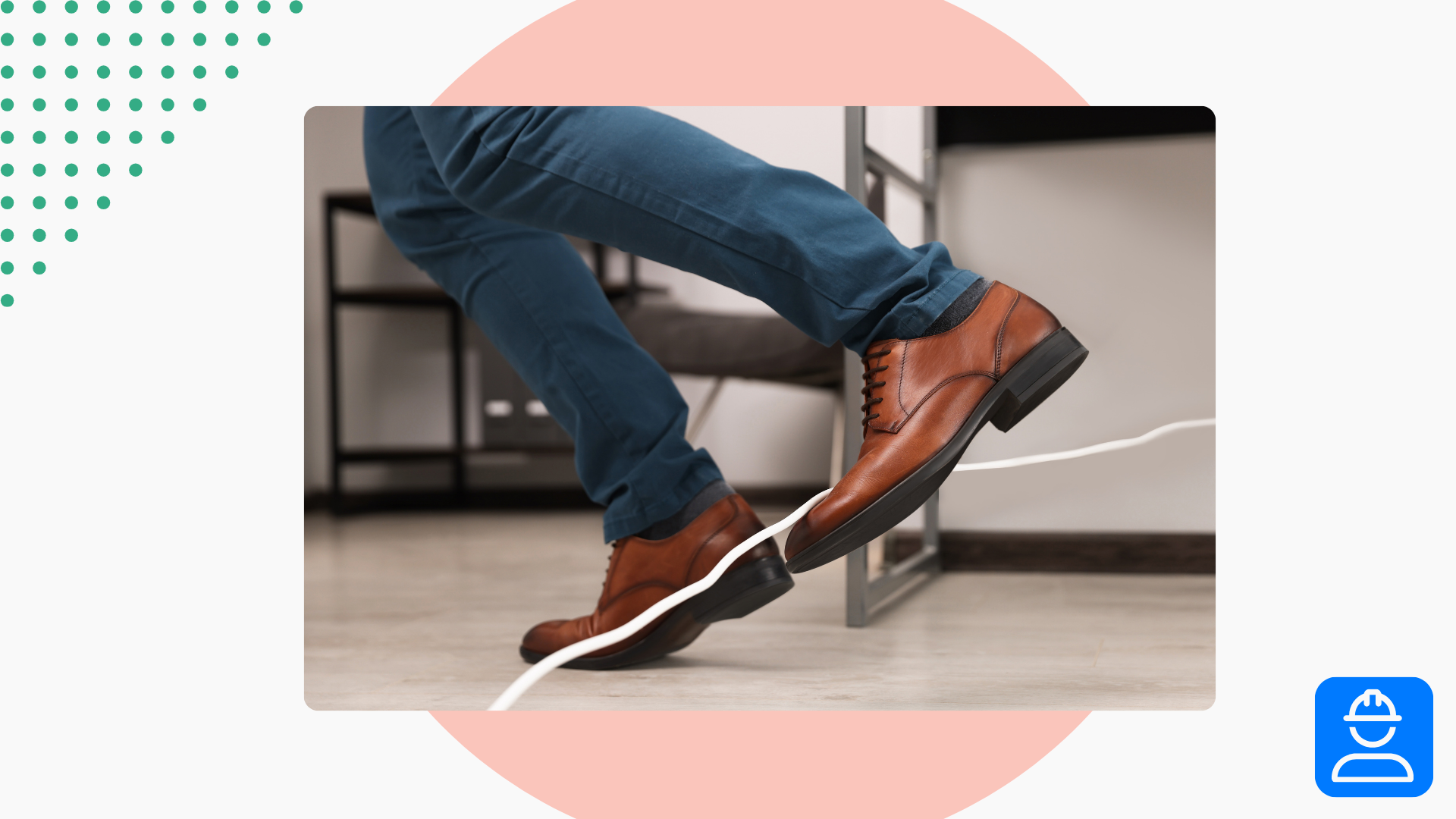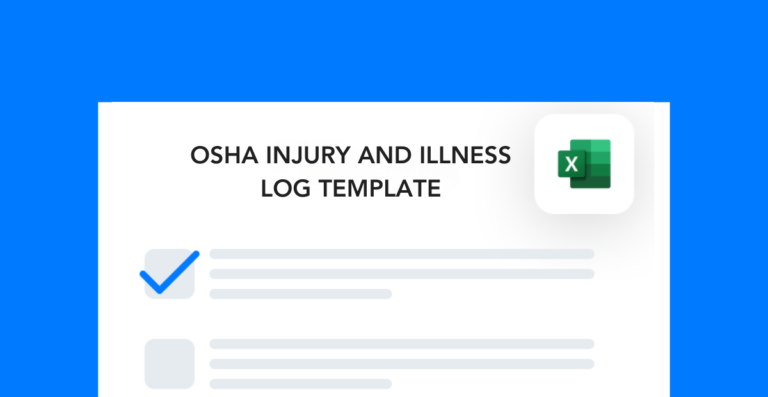This slips, trips, and falls toolbox talk covers root causes and preventative measures. By providing a routine safety refresher, you can prevent workplace injuries and maintain a safer workplace. Add this talk to your rotation so everyone keeps a proactive approach toward trip hazards.
Slips, trips, and falls toolbox talk overview
In this toolbox talk, we’ll discuss two main topics:
- Primary causes of trips, falls, and slips
- Preventative measures to take
Slips, trips, and falls are some of the most common workplace accidents, leading to injuries ranging from minor bruises to severe fractures. These incidents can occur due to various factors, including wet floors, uneven surfaces, cluttered walkways, and lack of proper footwear.
Primary root causes
Chances are you haven’t just tripped over your own feet. Most of the time, workplace falls happen because of environmental, situational, or behavioral factors. Some of the most common root causes of slips, trips, and falls are:
- Lack of awareness or attention to surroundings
- Improper or unsecured footwear
- Wet surfaces from spills, leaks, etc.
- Poor or nonexistent lighting
- Uneven walking surfaces from cracks, holes, floor damage, etc.
- Workplace clutter in walking paths
- Lack of use of handrails
- Building maintenance issues
- Improper equipment usage (ladders, stairs, etc.)
These incidents can cause serious injuries like fractures, breaks, or head trauma. It’s important to always maintain situational awareness so you can avoid injury and ultimately help improve the safety of the work area.
Preventative measures
To avoid slips, trips, and falls, everyone needs to do their part to keep the worksite hazard-free. This includes reporting any safety issues you find to management. Also, it involves practicing safe behaviors for each task you’re doing. You can avoid fall-related injuries by:
- Keeping your workstation clear of trash and clutter
- Putting tools, equipment, and materials away after each use
- Reporting or cleaning up spills immediately
- Wearing the right footwear for your work area
- Tying your shoelaces and tucking in long pant legs
- Keeping cables and plugs out of walkways
- Turning on the lights in active work areas
- Notifying maintenance of leaks and other building issues
- Walking, not running throughout the worksite
- Keeping your eyes on path
- Holding onto handrails when walking up and down stairs
- Gripping ladder rungs when going up and down
Remember, situational awareness is the key. You have to pay attention to where you’re at and what you’re doing to avoid injury. If you keep your eyes on path, then it’ll be easier to spot unsafe work conditions and either fix them or report them to someone who can.




